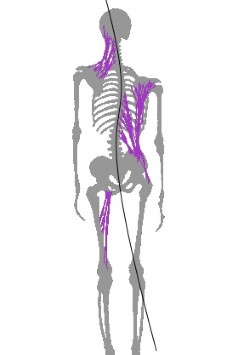
Treating TMJ Disorder and How Can Myofascial Release Help
In this article, I will discuss different methods for treating TMJ and how Myofascial Release can help you alleviate the pain.
The temporomandibular joint (TMJ) acts like a sliding hinge, connecting your jawbone to the temporal bone on your skull. You have one joint on each side of your jaw. TMJ disorders (Temporomandibular disorder) can cause pain in your jaw joint and in the muscles that control jaw movement and spread to the surrounding areas if the pain does not resolve fast.
Signs and symptoms of TMJ disorders may include:
- Pain or tenderness of your jaw
- Pain in one or both of the temporomandibular joints
- Aching pain in and around your ear
- Difficulty chewing or pain while chewing
- Aching facial pain
- Locking of the joint, making it difficult to open or close your mouth
TMJ disorders can also cause a clicking sound or grating sensation when you open your mouth or chew. But if there’s no pain or limitation of movement associated with your jaw clicking, you probably don’t need treatment for a TMJ disorder.
The exact cause of TMJ disorder is often difficult to determine. Your pain may be due to a combination of factors, such as genetics, arthritis or jaw injury. Some people who have jaw pain also tend to clench or grind their teeth (bruxism), although many people habitually clench or grind their teeth and never develop TMJ disorder.
If we look at TMJ disorder from the Myofascial Release perspective it can be easily explained, The soft tissue that holds the joint together and allows it to function (muscles, ligaments, tendons and connective tissue) often presents with a tightness that can affect the normal Temporomandibular joint movement which combines a hinge action with sliding motions. That’s why treating TMJ with Myofascial Release is a good option.
The parts of the bones that interact in the joint are covered with cartilage and are separated by a small shock-absorbing disk, which normally keeps the movement smooth. The tightness will lead to joint misalignment, and or excessive tension and overload on muscles, ligaments, cartridge, tendons, other connective tissue and the joint itself. Over time it will produce irritation and a constant inflammatory cycle on the area in question. If the tension is not taken care of it will spread to other muscles and even joints close by making the symptoms to spread as well. It can involve the neck, headaches and even shoulder disorders.
Traditional TMJ Treatment Options
Treating TMJ with Medications or Exercise
Traditional TMJ treatments usually treat TMJ disorder with pain medications, anti-inflammatory medications and exercises. The medications merely treat TMJ symptoms but not the cause of the problem.
If your TMJ treatment only includes exercises to focus on strengthening to correct joint misalignment, it may also increase the pain. Thinking of the misalignment cause as muscle weakness instead of tightness, it will increase muscle tension and in general overstress the already stressed tissue and joints. A tight muscle will always test weak positive because the fibers and contracted and do not have the full length to perform correctly.
Does Botox Help with TMJ Disorder?
Other TMJ Treatment option that is becoming popular is to inject the tight muscles with Botox. Botox is a drug made from a toxin produced by the bacterium Clostridium botulinum. It’s the same toxin that causes a life-threatening type of food poisoning called botulism.
Botox blocks signals from the nerves to the muscles. The injected muscle can’t contract, eventually, those treated muscles will atrophy, which may result in a quick solution to the pain but a long term problem for the joint, it will completely change the biomechanics of the TMJ joint, and probably adjacent joints as well, due to two main reasons:
- When the patient is desperate enough to begin treating TMJ with Botox, the problem has already spread to other joints or areas as cervical and shoulder (muscles or joint itself), and the medical professional will offer to inject not only the TMJ muscles but all the painful ones that will test hyperactive in an Electromyography or similar test.
- TMJ joint, directly and indirectly, works related to other joints as the skull, skull-cervical joint, all the cervical segment and the shoulder joint. If one of them changes biomechanics in the short and long term it will affect all the others at variable degrees.
In both cases, the muscle atrophy will result in muscle weakness. Since it is not reversible even though Botox activity is temporal is long enough to cause muscle atrophy that is NOT reversible, it is permanent – it will lead to joint and muscle imbalances and or misalignment or premature joint wear.

Myofascial Release and TMJ Relief
When a patient finally seeks myofascial release in order to treat TMJ, we find that the underlying cause of their pain might not be in the jaw. It may sound strange, but all body parts are connected through the fascial system. If we have fascial restrictions in other body parts, it might be causing or increasing tension in the painful area. It’s important to think about the fascial system as a 3-D web throughout the entire body.
Myofascial Release can decrease and eventually eliminate soft tissue tension and joint and/or cartilage misalignment which are the real cause of TMJ pain. Treating TMJ with Myofascial Release is achieved using structural releases directly over or around the trigger points, gentle joint mobilizations, cranial releases as well as other body parts fascia releases.
By releasing the fascia, the patient no longer experiences TMJ pain. To learn more about how Myofascial Release can help you alleviate your TMJ pain, please use our form below for a free 15-minute consultation. We are happy to make an appointment to help you live a pain-free life.
Learn more about Myofascial Release
PRICING
- Initial Evaluation & Treatment – $250
- 1-hour sessions – $125
- 1.5 hour sessions – $187.50
- 2-hour sessions -$ 250
Intensive treatment packages are available. Ask if interested
In cases where a patient has a chronic condition and/or multiple areas to work on, a longer session will offer extra time to address and treat the areas involved.
- Accepted Payments: Visa, Mastercard, American Express, checks and cash.
- Payments are made at the time of service.
- Fees for debit and credit cards may apply.
Are you ready to take back control of your health?
FREE 15 MINUTE PHONE CONSULT
Have questions and want to see if I’m a good fit for you? Please set up a FREE 15-minute phone consultation so we can chat. No pressure. Honestly.
